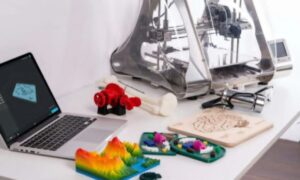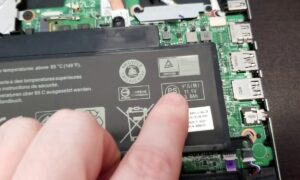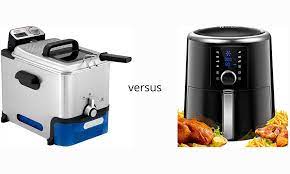Laptops are known for their portability and convenience. However, their versatile benefits get undermined by a battery that depletes quickly. There aren’t many things more annoying than a laptop that runs out of battery when you need it the most. If you must carry around extra batteries every time you go outside, you’re likely not getting the most out of your laptop.
Poor battery life is one of the top reasons people seek new laptops. Whether you’re busy studying, working, or in the middle of a long commute, you want a laptop with long and reliable battery life. With the proper adjustments and system tweaks, you can help your battery last longer, even on older laptops.
Let’s understand the seven reasons why a laptop battery drains quickly:
1. Too Many Programs Running
Having too many programs open is a common factor that causes battery life to drain. The more programs you ask your laptop to run simultaneously, the more computing power it will have to use. Many people unknowingly have a bunch of programs that start up when they turn on their machines. These programs run in the background and take processing power away from your active windows.
By going to “Settings” then “Startup,” you can choose which programs start running when you turn on your laptop. You can also go to “Settings,” “Privacy,” then “Background Apps” to see which programs are running in the background. Try disabling the ones you don’t need. If you’re not sure what a program does, type the program name into Google to see if it’s necessary for your laptop’s operations.
Another helpful trick is to go to “Settings,” “System,” then “Battery Saver.” Once on the Battery Saver page, scroll down to battery use to see which programs use the most power. This list will make it easy to choose which programs you need to disable first.
2. Your Laptop Is Too Hot
Heat is another factor that can drain the battery and interfere with the performance you get from your laptop. Heat becomes a problem, especially when you’re pushing your laptop hard by running multiple programs at once.
Excess heat causes your battery to produce a ton of energy that it can’t safely route to any of the hardware in your laptop. Over time, excess heat can damage the components inside your battery. Avoid keeping your laptop on warm surfaces or in direct sunlight. Also, don’t put the laptop on your legs, where body heat can contribute to overheating.
Airflow influences your laptop’s ability to regulate heat. Laptops like the ASUS ZenBook Pro Duo from are designed with a specialized cooling system that enhances airflow. The ZenBook, in particular, uses dual fans and the ASUS Active Aerodynamic System Plus to maintain an optimal internal temperature.
3. Screen Brightness Is Too High
Screen brightness is a common drain on your battery. The brighter your display is, the more energy your laptop will need to use. The power used by your display grows exponentially. That means the difference between low brightness and 50% is small, but the gap between 50% and full brightness is enormous.
Keeping your display and backlit keyboard dimmed is an excellent technique for conserving power. If you’re running multiple programs at once, dimming your display will help extend your battery life. Laptops like the ASUS ExpertBook P5440 allow up to 10 hours of battery life, so you have more flexibility with your brightness levels.
4. Battery Saver Mode Isn’t Activated
Activating battery saver mode is an effective way to get some extra life out of your laptop. Battery saver mode is similar to the low power mode on the iPhone. By activating this mode, your laptop automatically makes changes to certain Windows settings that reduce power consumption.
Under “Settings” and “Battery Saver,” you can customize how often this mode activates. The default setting is to start at 20%, but you can change it to 50%, for example, to extend your battery life in the middle of the day. Battery saver works by stopping programs like your Calendar from automatically syncing. It also throttles applications to minimize notifications and power use.
5. Lots of Devices Plugged In
Leaving devices plugged in is a sneaky habit that drains your battery life. External devices such as a mouse or a USB drive can slowly sap power from your laptop throughout the day. This power usage is enhanced if you’re using a device like an external hard drive that needs power to run. Unless you’re actively using a device, unplug it from your laptop to extend battery life.
6. Develop Healthy Charging Habits
If you’re like most people, you wait until your laptop battery almost depletes to start charging. Afterwards, you let your laptop reach 100% before unplugging. While the sequence of events may seem logical, research from Consumer Reports shows this charging practice can damage your battery.
Instead, it’s better to charge your laptop once it reaches 20% and unplug at around 80%. Charging your laptop this way helps you preserve the number of charge cycles in your battery. When battery saver mode is activated on your Windows 10 laptop, it will automatically stop charging your device at 80%. This helpful feature can get more charge cycles out of your laptop.
7. Review Your Connectivity Settings
Connectivity is another activity your laptop does in the background that can drain battery power. If you’re not using your Bluetooth or Mobile Hotspot connections, turn them off to save battery power. If your laptop supports LTE connections, it’s crucial to stop it from searching for a signal when unnecessary. Turn off your Bluetooth, Wi-Fi, and LTE connections when you don’t need them to preserve your laptop’s power.



































